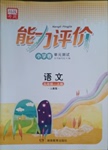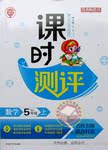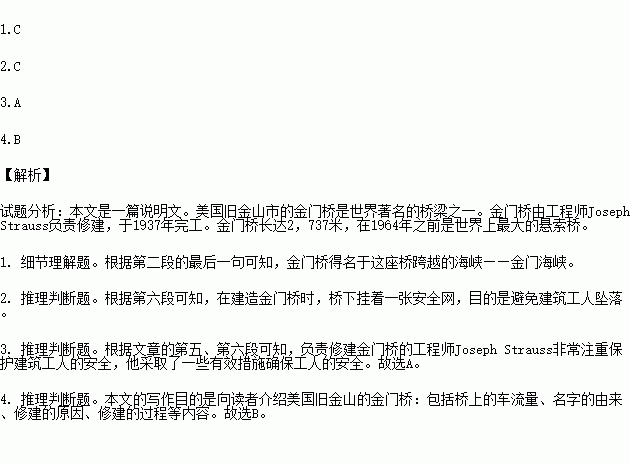题目内容
The Golden Gate Bridge in San Francisco, California is one of the world's most beautiful bridges. It is also one of the most visited places in the world. Vehicles cross the bridge an average of 41 million times each year. More than 1,800 hundred million vehicles have used the bridge since it opened more than 70 years ago.
The bridge was painted “International Orange” because that color went well with the natural surroundings. The color also is easier to see in the heavy fog that often covers the area. But the Golden Gate Bridge was not named for its orange color. It was named for the body of water that it crosses,the Golden Gate Strait.
The Golden Gate Strait is the entrance to the San Francisco Bay from the Pacific Ocean. The Golden Gate Bridge links the city of San Francisco with Marin County, California.
Planning for the bridge began in the 1920s when the area around San Francisco was growing. People living in the area needed another way to get to the city besides small ferries.
Joseph Strauss was the chief engineer for the project. Work began in 1934. Mr.Strauss demanded the strongest safy protections in the history of bridge building. These included the first use of “hard hats” to protect the workers' heads and special glasses to protect their eyes.
A special safety net was suspended(挂) under the bridge. This net saved the lives of 19 men during the construction. However, 11 other workers were killed when they fell from the bridge through the net. Still, this was a new safety record for the time.
The Golden Gate Bridge opened in 1937. It extends 1,280 meters across the water. The total length is 2,737 meters. It was the largest suspension bridge in the world until 1964.That is when the Verrazano Narrows Bridge opened in New York City. Today, the Golden Gate Bridge is the ninth longest suspension bridge in the world.
1.The Golden Gate Bridge was named after ________.
A.the local climate
B.the color of a paint
C.the strait it crosses
D.its natural surroundings
2.The purpose of suspending a special safety net is to ________.
A.protect the environment
B.make construction easier
C.prevent workers from falling
D.save building materials from falling
3.What do we know about Joseph Strauss?
A.He attached importance to the workers' safety.
B.His safety measures were not of practical value.
C.He built the first suspension bridge in the world.
D.He demanded strong measures to ensure the safety of the bridge.
4.The passage is written to ________.
A.invite readers to San Francisco
B.introduce the Golden Gate Bridge
C.describe how the Golden Gate Bridge was built
D.tell the story of an engineer called Joseph Strauss
 能力评价系列答案
能力评价系列答案 唐印文化课时测评系列答案
唐印文化课时测评系列答案
